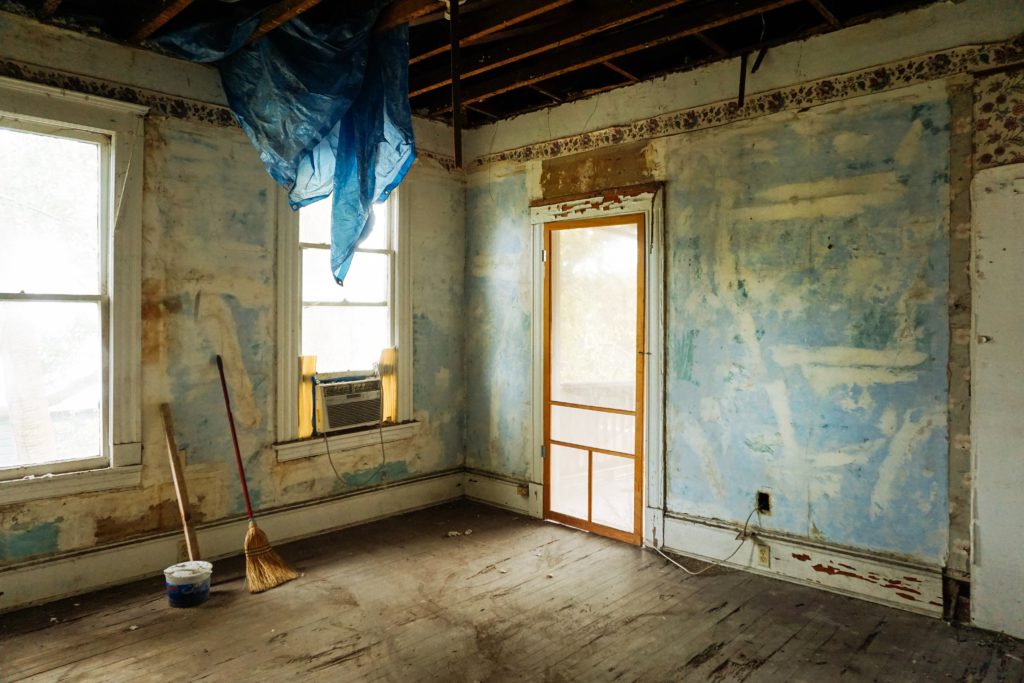For some homeowners, chimney breasts add character to a room, especially if they feature open fires. For others, they are an annoying obstacle that restricts space and makes it difficult fitting or arranging furniture.
In this guide, we’ll cover everything you need to know about removing a chimney breast. This will give you all the information you need to make an informed decision on how best to approach it.
See our FAQs on removing a chimney breast.
What is a chimney breast?
A chimney breast is the part of a wall that extends into a room to accommodate space for a fireplace. Often found in older homes, they extend from the fireplace up to the roof and vents smoke and gases outside.
Why remove a chimney breast?
Removing a chimney breast can create more usable space in your home. This allows you to change the overall layout and functionality of your home as you may be able to arrange furniture differently.
Also, removing an unused chimney breast can also reduce maintenance costs, as these structures can deteriorate over time. Structural issues are also something to consider, as a damaged chimney breast can affect the integrity of rooms and potentially the whole building.
Therefore, it’s a good idea to weigh up if keeping the chimney breast will cost you more than simply removing it.
What do I need to consider when removing a chimney breast?
The most important question to ask is whether you will weaken the structure of your home if you take out a chimney breast. If you live in a semi-detached or terraced home, it is also essential to know how the removal will affect your neighbour’s home too.
If you simply go ahead hoping everything will be all right, you could be responsible for a lot of problems, and you might need to pay out for high remedial costs. You could even put people in danger through a collapse of floors, walls or ceilings.
To proceed on a solid footing, the best place to start is with a building survey by a qualified surveyor. Your survey will guide you through building regulations and engaging a structural engineer. While internal changes to a building do not need planning permission, if the work involves removing an external chimney, you may also need to approach your local planning authority.

Does removing a chimney breast devalue a house?
Chimney breasts are important features of older homes, and for buyers who want a home with a traditional feel they are a definite asset. If you remove a chimney breast from an older house, it is likely to be less appealing to a significant number of buyers. The value could slip, and the house may be more difficult to sell.
However, if you are in a home with a less traditional feel, creating more space by taking out chimney breasts could make it more saleable and possibly at a better price. One tip is to see what has happened in similar nearby properties, and to gauge what is right for the local market. If you do take out a chimney breast, it is important to retain surveys and building reports which show that the work complies with all local authority requirements.
Does removing a chimney breast need to follow building regulations?
Yes, removing a chimney breast will require you to follow building regulations. This is because the process can impact the structural integrity of the property, meaning you must ensure adequate support to carry the weight instead.
Additionally, the work needs to be inspected and approved by your local building control authority to ensure safety and compliance with regulations. A qualified surveyor will be able to guide you through the process.
Do I need planning permission to remove a chimney breast?
No, you generally won’t need planning permission to remove a chimney breast as it’s considered internal work. However, if your property is listed or located in a conservation area, you may need permission.
Do you need your neighbour’s permission to remove a chimney breast?
Yes, if the chimney breast is part of a shared wall, you need your neighbour’s consent under the Party Wall Act.
With extensive experience in all types of property and areas in the South East of England, we can help you to ensure your property will be safe and in a good state of repair for the long term.
To find out more get in touch with Robinson Elliott Chartered Surveyors today to discuss your concerns or requirements.
Frequently asked questions
In a traditionally built two-storey building, a chimney breast on the ground floor supports the chimney breast above it on the first floor and into the loft space through to the chimney stack on the roof. If the lower chimney breasts are removed, temporary supports need to be used while a permanent supporting beam or bracket is put in place.
Some properties feature false chimney breasts. These are essentially decorative features used to house electric or gas fires, or woodburners. They are not part of the structure of the house, and do not support a chimney. They are more common in homes built after the 1960s as central heating became more common. A false chimney breast can be removed without any risk of damage to the structure, but you should always consult a surveyor before you begin.
In semi-detached and terraced homes, chimney breasts are usually joined to party walls to form a strong structure. By removing the chimney breast, you are affecting the party wall and you are subject to legislation under the Party Wall Act. You need to notify your neighbour about the work, and to make a formal agreement signed by both parties.







